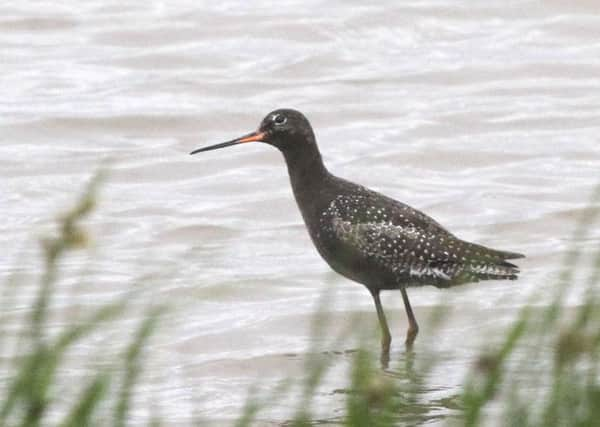Birdwatch: Waders can still be seen in their finest summer attire


Spotted redshanks look smart just now with totally black plumage apart from small white spots on the wings while ruffs have kept at least part of the feather collars used in their spectacular courtship displays.
Parties of black-tailed godwits are being seen at many sites, the majority coming here from Iceland, and have orange-brown heads and bellies contrasting with white stripes on the wings and black tails.
Advertisement
Hide AdAdvertisement
Hide AdThere have also been good numbers of common and some green and wood sandpipers and the first whimbrels and greenshanks of the ‘autumn’ passage.
The timing of these arrivals in our region is a good indicator of what sort of breeding season it has been further north. Large numbers of adult birds now would suggest a poor year as, with no chicks to rear, there is nothing to stop them beginning the long journey back to wintering sites in Africa.
There has been a crash in the lemming and vole population on the Arctic tundra this year which happens every few summers. As a result birds such as skuas will have turned to wader chicks as substitute prey and fewer juvenile waders are likely to be passing through Yorkshire sites next month and in September.
Sightings of several short-eared owls along the east coast over the past few days and two long-eared owls at Spurn also suggest a lack of food for them further north.
Advertisement
Hide AdAdvertisement
Hide AdWater levels have been lowered at the Blacktoft Sands reserve where 20 spotted redshanks, 120 black-tailed godwits, six ruff, green and common sandpipers and summer plumaged dunlins have been reported. There have also been good views of bearded tits and water rails but as yet no first flights of young Montagu’s harriers.
A red-necked phalarope was reported at Golden Acre Park, Leeds on Tuesday and a summer plumaged knot was present at Swillington Ings.
A little bittern left Old Moor last week and on Saturday morning was found 16 miles further north at Swillington Ings. On Tuesday morning it was back at Old Moor again.
Along the Yorkshire coast numbers of little gulls are starting to build as they leave breeding sites around the Baltic with 90 summer plumaged birds reported in Bridlington Bay and up to 170 over Hornsea Mere in the evenings.
Advertisement
Hide AdAdvertisement
Hide AdMore yellow-legged gulls were reported as they disperse from breeding sites around the Med while, from further east, a Caspian gull was seen on Effingham Street in Sheffield this week.
Michael Flowers is taking bookings for his ten-week autumn birdwatching course starting on September 23. Many sessions involve identifying birds on migration. Most vacancies are on Tuesday and Friday mornings and Friday afternoons. Limited vacancies on some other sessions. To book or for more details, email him at [email protected] or call 07946 625688.